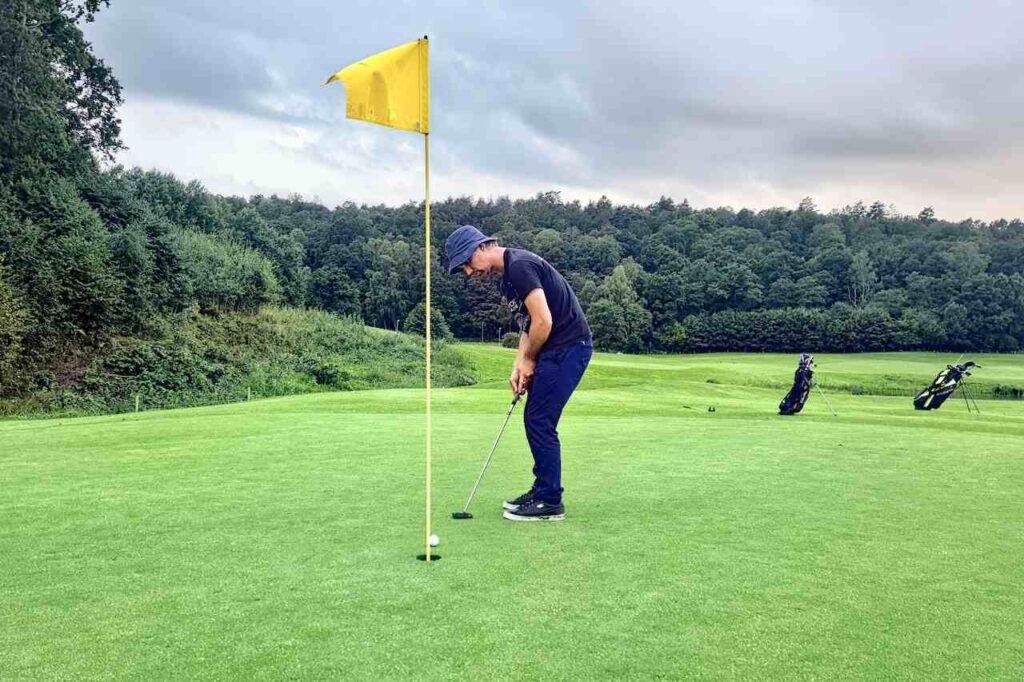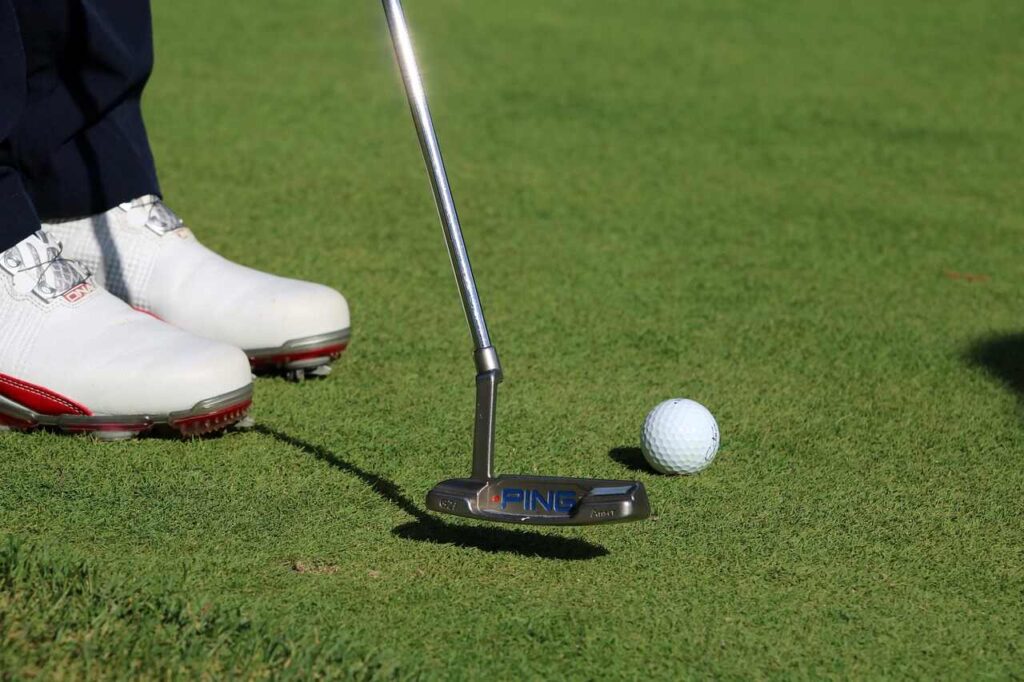Putting is one of the most critical aspects of golf and often the area where strokes can be most easily saved or lost. Improving your putting can significantly lower your scores and enhance your overall game. This comprehensive guide on how to improve your putt provides strategies, techniques, and tips to help you become a more effective putter.
Table of Contents
Understanding the Basics to Improve Your Putt
Before diving into specific techniques, it’s essential to understand the basics of putting. Putting is all about precision, touch, and consistency. Unlike other golf shots, which require power and distance control, putting focuses on accuracy and feel.
Key Elements of a Good Putt
- Grip: A proper grip is fundamental for a smooth putting stroke. There are various grips, but the most common are the reverse overlap, the cross-handed (left-hand low), and the claw. Experiment with different grips to find the one that feels most comfortable and provides the best control.
- Stance and Alignment: Your stance should be comfortable and stable. Position your feet shoulder-width apart, with your eyes directly over the ball. Align your shoulders, hips, and feet parallel to the target line. This alignment helps ensure that your putter face remains square to the target throughout the stroke.
- Ball Position: The ball should be positioned slightly forward of the center in your stance. This position helps you strike the ball on the upswing, promoting a smooth roll.
- Putter Face and Path: The putter face should remain square to the target line during the stroke. The path of your putter should be a slight arc or straight back and through, depending on your preference. Consistency in your stroke path is crucial for accuracy.
Techniques to Improve Your Putt
- Develop a Routine: Establishing a consistent pre-putt routine can enhance your focus and confidence. Your routine might include visualizing the line, taking practice strokes, and ensuring your alignment. Stick to this routine for every putt to create a sense of familiarity and control.
- Read the Green: Understanding how the green’s slopes and grain affect the ball’s path is vital. Take time to walk around your putt, view it from different angles, and feel the slope with your feet. Consider how the terrain will influence the ball’s break and speed.
- Control Your Speed: Speed control is critical for effective putting. Practice hitting putts of various lengths to develop a feel for different speeds. Focus on a smooth, controlled stroke and aim to get the ball to die into the hole.
- Focus on the Target: Instead of fixating on the ball, focus on the target. Look at the spot where you want the ball to enter the hole or your intended line. This focus can help improve your accuracy and feel.
- Maintain a Smooth Stroke: A smooth, rhythmic stroke is key to good putting. Avoid jerky or rushed motions. Practice with drills that emphasize a steady tempo, such as using a metronome or counting during your stroke.
Drills to Enhance Your Putting Skills
- Gate Drill: Place two tees just wider than your putter head a few feet from the hole. Practice putting through the gate to improve your stroke path and accuracy.
- Clock Drill: Arrange balls in a circle around the hole at different distances, resembling a clock face. Practice putting from each position to improve your consistency and ability to read various breaks.
- Distance Control Drill: Place a club or alignment stick a few feet behind the hole. Practice putting from different distances, aiming to stop the ball between the hole and the club. This drill helps with speed control and preventing long putts.
- One-Handed Putting: Practice putting with one hand to develop a feel for the stroke and enhance your touch. Alternate between your left and right hand to build strength and control.
Mental Strategies to Improve Your Putt
- Stay Positive: Maintaining a positive mindset is crucial. Focus on the process rather than the outcome, and don’t dwell on missed putts. Stay confident and trust your technique.
- Visualize Success: Visualization can be a powerful tool. Picture the ball rolling along your intended line and dropping into the hole. This mental imagery can boost your confidence and improve your focus.
- Manage Pressure: Putting under pressure can be challenging. Practice pressure putts by creating high-stakes scenarios in practice, such as competing with friends or setting personal challenges. This preparation can help you stay calm and focused during actual rounds.
Equipment Considerations
- Putter Selection: Choosing the right putter can make a significant difference. Consider factors like the putter’s length, weight, and balance. Try different putters to find the one that feels best and provides the most control.
- Ball Choice: The type of ball you use can also impact your putting. Some balls have softer covers that provide better feel and control on the greens. Experiment with different balls to see which one suits your putting style.
Conclusion: How to Improve Your Putt?
Improving your putting is a combination of mastering technique, developing a consistent routine, and maintaining a strong mental game. By focusing on the fundamentals, practicing with purpose, and staying positive, you can become a more effective putter and lower your scores. Remember, putting is a skill that requires ongoing practice and refinement. Embrace the process, and enjoy the journey to becoming a better putter.

Unique FAQs about How to Improve Your Putt
What is the most effective grip for putting?
There is no one-size-fits-all answer, as the most effective grip varies from golfer to golfer. Common grips include the reverse overlap, cross-handed (left-hand low), and the claw. The best grip for you is the one that feels most comfortable and provides the best control. Experiment with different grips during practice to determine which one suits you best.
How can I improve my ability to read greens?
Improving your green-reading skills involves practice and observation. Walk around the hole to view it from different angles, feel the slope with your feet, and pay attention to the grain and contours of the green. Using tools like a putting mirror or alignment sticks can also help you better understand how your putts will break.
Why is ball position important in putting?
The ball position affects the arc of your putting stroke and the quality of contact. Placing the ball slightly forward of center in your stance helps ensure you strike the ball on the upswing, promoting a smooth roll. Consistent ball position helps maintain a repeatable stroke, leading to better accuracy and distance control.
How can I control the speed of my putts better?
Speed control is crucial for effective putting. Practice hitting putts of various lengths to develop a feel for different speeds. Focus on a smooth, controlled stroke and visualize the ball rolling to the hole. Using drills such as the ladder drill, where you putt to progressively longer distances, can also help improve your speed control.
What are some effective drills to improve my putting accuracy?
Effective drills include the Gate Drill, where you place two tees just wider than your putter head and practice putting through them, and the Clock Drill, where you arrange balls in a circle around the hole and putt from each position. These drills help improve your stroke path, alignment, and consistency.
How can I maintain a smooth putting stroke?
A smooth putting stroke requires a relaxed grip and a consistent tempo. Practice with a metronome or count during your stroke to maintain rhythm. Focus on keeping your backswing and follow-through equal in length, and avoid jerky or rushed motions.
What should I focus on during my pre-putt routine?
Your pre-putt routine should include aligning your putt, visualizing the ball’s path, taking practice strokes, and ensuring your stance and grip are comfortable. Consistency in your routine helps build confidence and reduces variability in your stroke.
How does the type of putter affect my putting?
The type of putter can influence your feel, control, and consistency. Factors such as the putter’s length, weight, balance, and face technology can affect performance. It’s essential to try different putters to find one that complements your stroke and feels comfortable in your hands.
How can I improve my mental game for putting?
Improving your mental game involves staying positive, visualizing success, and managing pressure. Focus on the process rather than the outcome, and don’t dwell on missed putts. Practice pressure putts by creating high-stakes scenarios, such as competing with friends or setting personal challenges, to build resilience and confidence.
What role does visualisation play in putting?
Visualization helps you focus and execute your putts with confidence. By picturing the ball rolling along your intended line and dropping into the hole, you reinforce positive outcomes and improve your mental preparation. Incorporate visualization into your pre-putt routine to enhance your performance.
Why is it important to practice putting with one hand?
Practicing with one hand, both left and right, helps develop a better feel for the stroke and enhances your touch. It can also highlight any imbalances or weaknesses in your putting mechanics, allowing you to make necessary adjustments for a more consistent stroke.
How can I adjust my putting for different green speeds?
Adjusting for different green speeds involves adapting your stroke length and force. On faster greens, use a shorter, more delicate stroke to avoid overshooting the hole. On slower greens, employ a firmer, longer stroke to ensure the ball reaches the hole. Practice on greens with varying speeds to develop a versatile putting technique.



